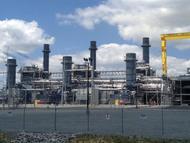Gas Generation Phaseout
- By:
- Edward A. Reid Jr.
- Posted On:
- Jan 18, 2022 at 7:00 AM
- Category
- Energy Policy, Climate Change
The US currently generates more than 500,000,000 Megawatt-hours, or approximately 25% of electric utility annual electricity production, in coal-fueled generating stations, which the Administration has said will all cease operation by 2030. The US currently generates more than 800,000,000 Megawatt-hours, or approximately 37% of electric utility annual electricity production, in natural gas fueled generating stations, which the Administration has said will all cease operation by 2035. US natural gas fueled electric generation has more than doubled over the past 10 years because of the lower cost of natural gas and the higher generating efficiency of natural gas combined cycle powerplants.
The US currently generates 338,000,000 Megawatt-hours, or approximately 8.4% of all utility-scale electric generation. This electricity is generated by approximately 60,000 wind turbines with a total nameplate capacity of 122,465 MW operating at an average capacity factor of approximately 32%.
Replacing the generating capacity of the US coal-fueled generating fleet would require installation of approximately 625,000 MW of wind turbine rating plate capacity, plus the electricity storage capacity to store the output of the wind turbines for the maximum number of days duration of a potential “wind drought”. Additional generation capacity would be required to recharge storage after such a “wind drought” while meeting the contemporaneous demand on the grid.
Replacing the generating capacity of the US natural gas generating fleet would require installation of approximately 1,000,000 MW of wind turbine rating plate capacity, plus the storage capacity required to make the wind generation reliable and dispatchable, and the additional generating capacity required to recharge storage after periods of low/no wind generation.
US wind turbine installations peaked in 2020 at 14.2 GW (14,200 MW). Installation of 625,000 MW of wind turbine rating plate capacity over the period 2022-2029 would require installation of an average of 78 GW of new wind turbine generating capacity per year, or 5.5 times the capacity added in 2020. Installation of an additional 1,000,000 MW of wind turbine generating capacity over the period from 2030-2034 would require installation of an additional 200 GW of new wind turbine generating capacity per year, or 14 times the capacity added in 2020.
The current installed cost of new wind turbine generating capacity is approximately $1.3 million per MW. Assuming anticipated cost reductions resulting from increased manufacturing volume would be offset by cost increases resulting from increased demand for the rare earth materials required for fabrication of the wind turbines, the total cost of replacing existing fossil fuel electric generation with wind generation would be approximately $2 trillion. This estimate does not include the cost of the land on which the wind turbines are installed, the cost of the storage batteries required to make the wind capacity reliable and dispatchable and the cost additional transmission infrastructure required to connect the wind farms to the existing electric grid.
The replacement of both the coal and natural gas generating capacity would be deferred toward the ends of the required decommissioning periods to assure grid reliability through the transition, as operating experience was gained with the replacement wind and storage infrastructure.


